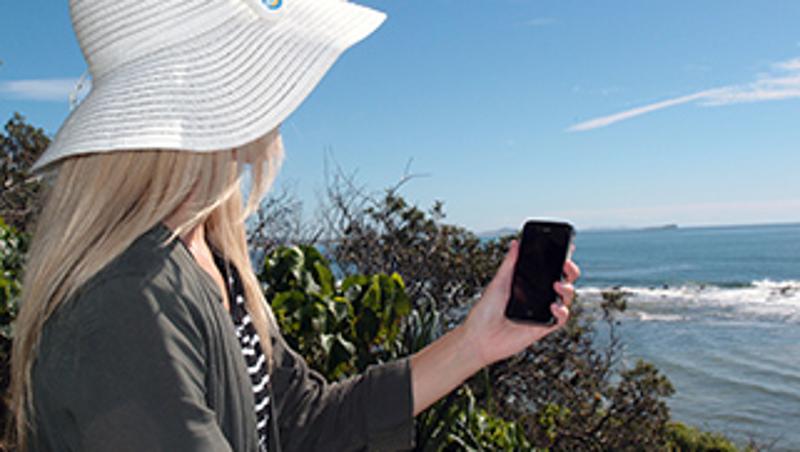
Young smartphone-using adults in Brisbane are wanted to join a new QUT research project designed to discover whether or not devices to detect ultraviolet radiation (UVR) and mobile phone apps promoting sun smart behaviour are effective.
Dr Elke Hacker, Postdoctoral Research Fellow with QUT's Institute of Health and Biomedical Innovation is leading the project which begins in September and she said there will be a small reimbursement to people who participate.
"If you are aged between 18 and 30, own a mobile phone (4/5/6 iPhone or android smartphone), have not been previously diagnosed with melanoma, and haven't used the SunSmart application on a regular basis then I would like you to sign up for our new skin cancer prevention project," Dr Hacker said.
"Since the 1980s Australia has led the world in the successful implementation of sun protection messages and promotional campaigns like Slip Slop Slap and SunSmart.
"These programs have greatly raised public awareness and improved preventative behaviours, leading to a reduction in skin cancer incidence in younger generations. Yet it is still predicted that by 2020 there will be over 13,000 new cases of melanoma in Australia (Australian Institute of Health and Welfare. 2012).
"Ultraviolet radiation or sunlight exposure is the main environmental risk factor for skin cancer development and other UVR-related diseases such as cataracts and skin aging.
"Many young Australians still get sunburnt on a regular basis, despite having good knowledge and sun-protective intentions. Sunburns often occur during unplanned sun exposure, around the home or during activities where people do not expect to be outside for long.
"Commercial interest has seen a large number of UVR-detecting devices and mobile phone application programs being marketed directly towards the public. However we don't really know if these products are that precise, whether they provide adequate feedback to consumers, and whether people adjust their behaviour accordingly."
Dr Hacker said there was also a lack of evidence on how consumers use such devices and whether some devices are better suited to aid consumers than others.
"To build the evidence for using UVR feedback devices within public health education campaigns, this study will evaluate one mobile phone app and one personal UVR dosimeter device, and the impact, if any, these have on peoples' UVR protection and exposure behaviours," Dr Hacker said.
"We need men and women aged between 18 and 30 for the project. They might be asked to wear a small device that measures UVR or to download and use the SunSmart phone application.
"The tests will run over several weeks and involve some visits to QUT's Kelvin Grove campus. Participants will then complete a questionnaire at one week and three months following the intervention."
To join the project examining new technologies for sun protection, email skntec@qut.edu.au for more information.
Media contact:
Amanda Weaver, QUT Media, 07 3138 9449, amanda.weaver@qut.edu.au
After hours: Rose Trapnell, 0407 585 901, media@qut.edu.au




